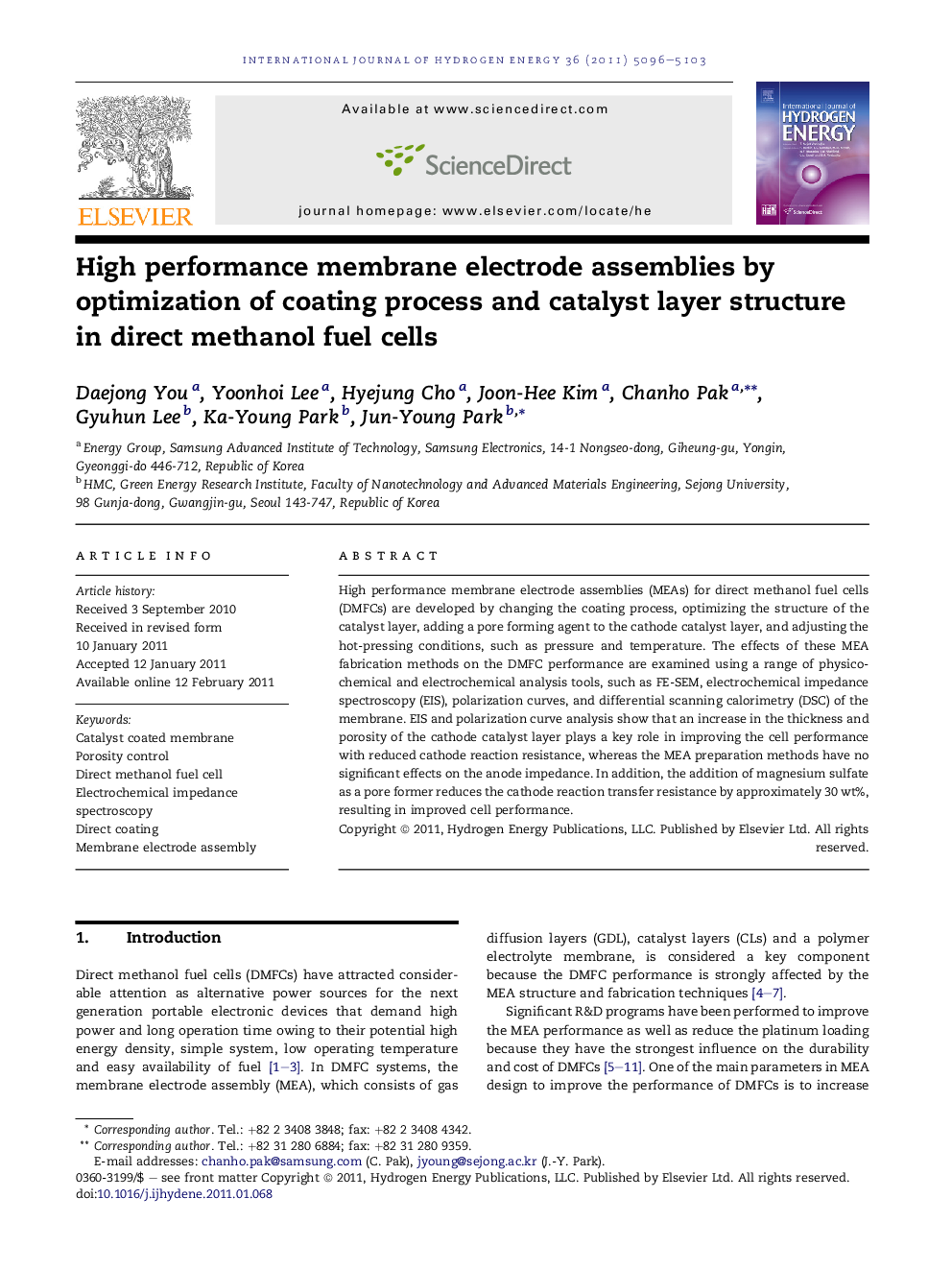| Article ID | Journal | Published Year | Pages | File Type |
|---|---|---|---|---|
| 1279817 | International Journal of Hydrogen Energy | 2011 | 8 Pages |
High performance membrane electrode assemblies (MEAs) for direct methanol fuel cells (DMFCs) are developed by changing the coating process, optimizing the structure of the catalyst layer, adding a pore forming agent to the cathode catalyst layer, and adjusting the hot-pressing conditions, such as pressure and temperature. The effects of these MEA fabrication methods on the DMFC performance are examined using a range of physicochemical and electrochemical analysis tools, such as FE-SEM, electrochemical impedance spectroscopy (EIS), polarization curves, and differential scanning calorimetry (DSC) of the membrane. EIS and polarization curve analysis show that an increase in the thickness and porosity of the cathode catalyst layer plays a key role in improving the cell performance with reduced cathode reaction resistance, whereas the MEA preparation methods have no significant effects on the anode impedance. In addition, the addition of magnesium sulfate as a pore former reduces the cathode reaction transfer resistance by approximately 30 wt%, resulting in improved cell performance.
